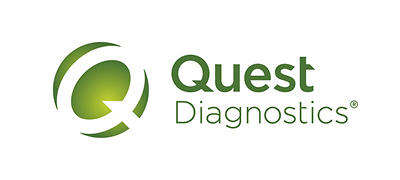A workplace cost crisis hiding in plain sight
Chronic disease is the silent force behind the nation’s healthcare crisis. Beyond upsetting personal lives, it has a massive impact on employers' bottom lines. According to the CDC, 90% of healthcare costs in the US are tied to chronic conditions such as cardiovascular disease, hypertension, cancer, and diabetes.1 In fact, research shows that diabetes is the most expensive condition with $189.6 billion in direct healthcare costs each year.2
For employers like you, this isn’t just a national health trend—it’s a rising cost center embedded in your own employee population. With active claims (and high costs) hiding in your health plan, chronic disease prevention is a critical issue demanding strategic attention.
Screening gaps have financial consequences
To attract and retain the brightest employees, most organizations work hard to offer competitive health benefits, but the true cost risk lies in care gaps. Missed screenings and late diagnoses harm worker health, but may also drive avoidable, high-cost interventions and contribute to increased absenteeism, reduced productivity, and long-term employee disengagement.
Undiagnosed conditions don’t stay silent. They show up as hospitalizations, surgeries, emergency room visits, lost productivity, and—ultimately—high claims with soaring costs. Wellness programs must be powerful enough to improve health outcomes and financial stewardship.
Modern workforce challenges require modern wellness tools
To close screening gaps and shift from reactive to proactive care, forward-thinking employers seek more innovative solutions designed for today’s workforce. For example:
These tools reduce barriers and make it easier for employees to engage with preventive health measures. When adopted into a larger wellness strategy, this kind of engagement helps build a workplace culture that values and supports early detection.
Tailoring a culture of prevention with data-driven strategy
Chronic disease doesn’t affect every workforce the same way. That’s why benchmarking and predictive insights are essential to shaping your prevention and early detection strategy. Quest’s 60+ billion anonymized patient data points provide unmatched population health analytics, helping HR leaders:
- Benchmark their population’s risk against industry norms
- Identify high-risk employees and care gaps
- Track program participation
- Measure downstream cost impact
Proven results that speak to your C-suite
Armed with data-backed insights, organizations can prioritize the most meaningful health interventions, while also demonstrating clear value to both employees and C-suite leadership.
Employers who invest in robust screening and preventive care strategies are likely to see a dramatic payoff in key areas:
- Higher early detection rates for chronic disease
- Reductions in overall healthcare spend linked to timely intervention and disease management
- Improved employee satisfaction, retention, and productivity
The bottom line is clear: better health is good for people and good for business.
Choose Quest to help close chronic care gaps
Quest Workforce Health Solutions brings decades of experience, expansive reach, and data-driven insights to help employers close care gaps and improve outcomes for workers at risk for chronic conditions. These solutions have already been adopted by America’s largest employers, including 40% of Fortune 500 companies.
A population health and wellness approach that works
Quest offers an integrated ecosystem—combining clinical expertise, national access, and personalized engagement to drive outcomes.
The goal of Quest Workforce Health Solutions is straightforward: identify your employees’ health risks sooner, support your workforce more effectively, and protect your bottom line in the process.
Benchmark your organization’s chronic disease risk
Contact Quest Workforce Health Solutions to begin tailoring an early detection and wellness strategy that meets your workforce where they are.
References
- Centers for Disease Control and Prevention. Fast facts: health and economic costs of chronic conditions. Published July 12, 2024. Accessed May 15, 2025. https://www.cdc.gov/chronic-disease/data-research/facts-stats/
- Milken Institute. The Costs of Chronic Disease in the U.S. Published August 2018. Accessed May 15, 2025. https://milkeninstitute.org/sites/default/files/reports-pdf/ChronicDiseases-HighRes-FINAL_2.pdf
- Centers for Disease Control and Prevention. About chronic diseases. Published October 4, 2024. Accessed May 15, 2025. https://www.cdc.gov/chronic-disease/about/index.html
- Aflac. 2025 Wellness Matters Survey. Published April 2025. Accessed July 16, 2025. https://www.aflac.com/docs/cancer-campaign-wellness-matters/aflac-wellness-matters-survey.pdf






